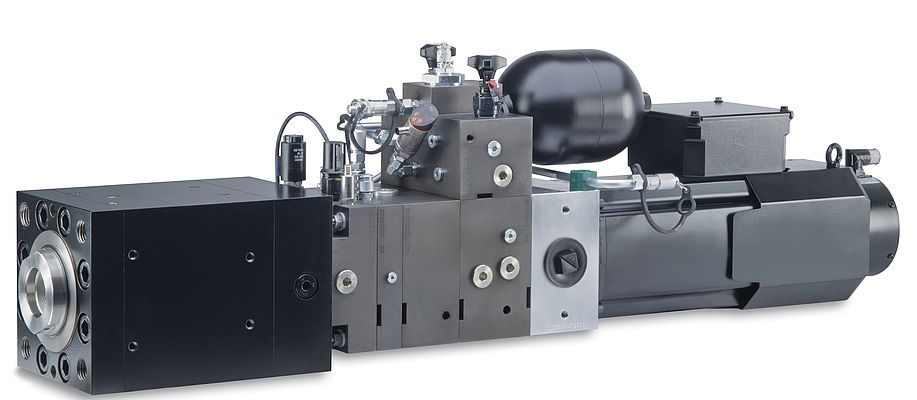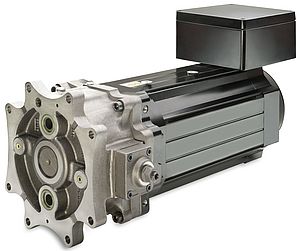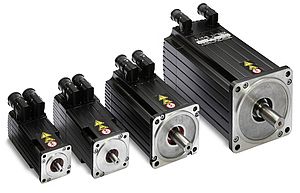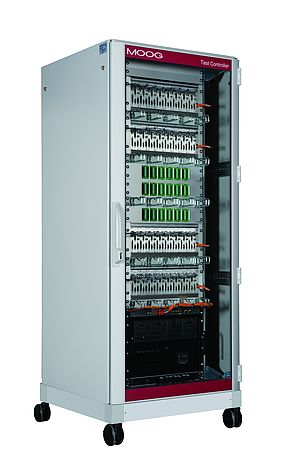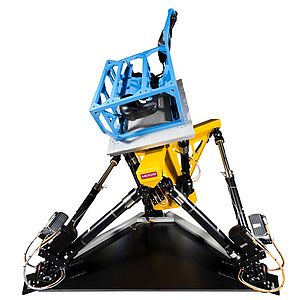Designed for applications requiring high dynamics and power density, Moog’s Compact EAS is suitable not only for metalworking but also for other materials including glass, ceramic, plastics and leather. Pump output and direction of rotation enable a defined linear movement of the cylinder while force, speed and position can directly be preset.
Compact EAS units comprise six elements: a servo motor, internal gear pump, compensation tank, valve block, stop valve, and cylinder. Unlike conventional hydraulic systems, everything on the Compact EAS is integrated; there are no pipes or hoses. Pump output and direction of rotation are controlled by the servo motor, eliminating the need for directional or proportional valves, resulting in a defined linear movement of the cylinder. Forces, speed and position on this linear actuation axis are all freely programmable.
The high force capability and force density of all Moog EAS actuation systems offers an attractive alternative to electrohydraulic (EH) or electromechanical (EM) systems. They are quieter, they use much less oil and less energy, and they have fewer components to maintain.
“The Compact EAS provides users with numerous benefits,” says Harald Branz, Sales Manager Central and Eastern Europe. “The system is highly dynamic, energy-efficient, and requires minimal maintenance. The Compact EAS is easy to configure and integrate into machine systems, providing, significant cost advantages over alternative types of actuation systems.”
In its standard formats, the Compact EAS comes in 3 versions: linear, parallel and orthogonal
The Compact EAS can provide a movement in the cylinder of up to 640 mm/s with a force of up to 500 kN in its standard configuration while customized versions permit to reach more speed and force. Position accuracy is precise to within 0,01 mm, while position repeatability is down to 0.01 mm.
There are three versions of the new Compact EAS in its standard format:
• linear, in which the cylinder is on the same axis as the motor;
• parallel, in which the cylinder is underneath the valve block and moves in the opposite direction;
• orthogonal, where the cylinder is mounted vertically underneath the valve block.
There is also a “split” design, in which the cylinder forms its own unit separate from the motor and pump group, without losing any of the advantages of the basic concept.



